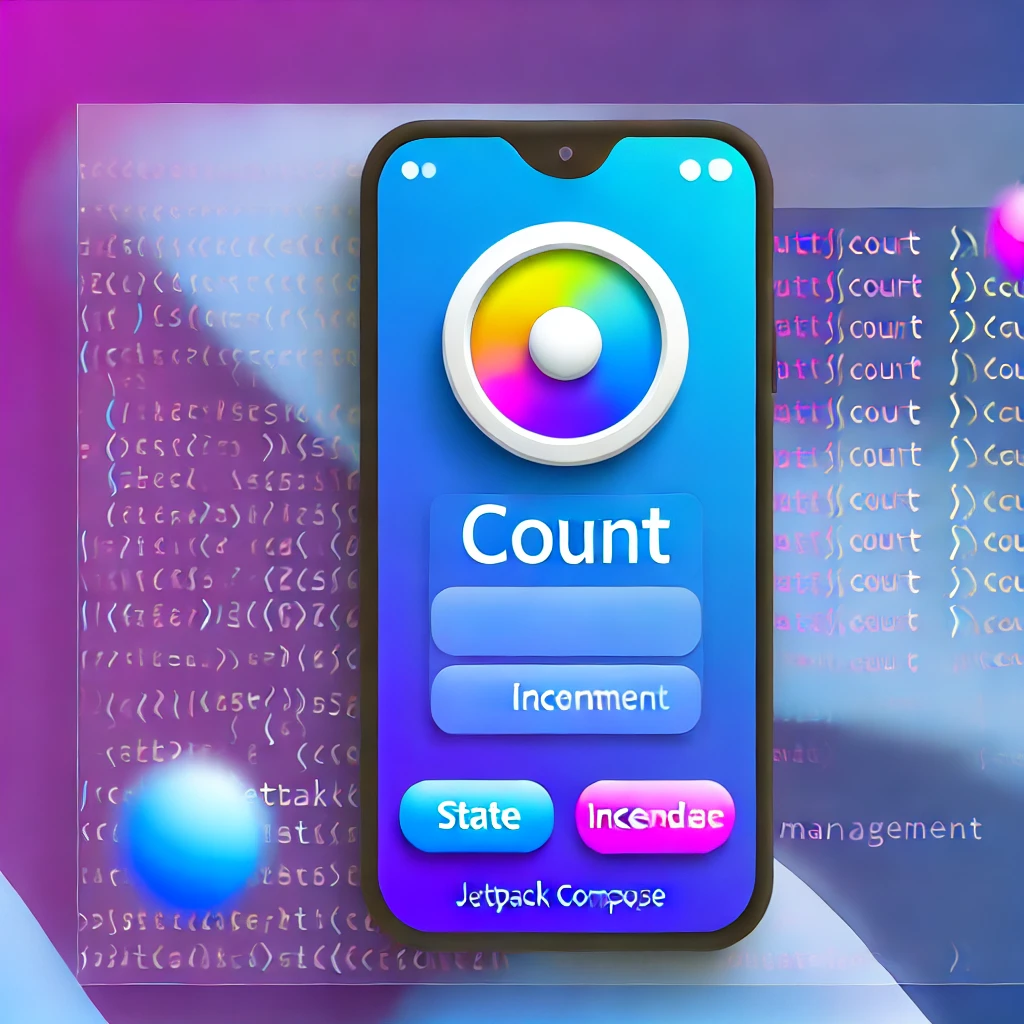What is State Management?
In the context of Jetpack Compose, state refers to any data that can change over time and affects what is displayed on the screen. Efficient state management ensures that your UI reacts dynamically and correctly to state changes, providing a seamless user experience.
Key Concepts
- State Hoisting: This is a pattern where state is moved up to the closest common ancestor that needs to access or modify the state. This allows for better separation of concerns and reusability of composable functions.
- Remember and MutableState: Jetpack Compose provides the
rememberfunction to retain state across recompositions andmutableStateOfto create a mutable state.
Code Example: Counter App
Let’s create a simple counter app to illustrate state management in Jetpack Compose.
Step 1: Set Up Your Project
First, ensure you have a basic Jetpack Compose project set up. You can use Android Studio to create a new project with Jetpack Compose support.
Step 2: Define the Counter App
Create a new composable function for your counter app:
import android.os.Bundle
import androidx.activity.ComponentActivity
import androidx.activity.compose.setContent
import androidx.compose.foundation.layout.*
import androidx.compose.material.Button
import androidx.compose.material.MaterialTheme
import androidx.compose.material.Surface
import androidx.compose.material.Text
import androidx.compose.runtime.*
import androidx.compose.ui.Alignment
import androidx.compose.ui.Modifier
import androidx.compose.ui.unit.dp
import com.example.counterapp.ui.theme.CounterAppTheme
class MainActivity : ComponentActivity() {
override fun onCreate(savedInstanceState: Bundle?) {
super.onCreate(savedInstanceState)
setContent {
CounterAppTheme {
Surface(color = MaterialTheme.colors.background) {
CounterApp()
}
}
}
}
}
@Composable
fun CounterApp() {
// Step 3: Define a state variable using remember and mutableStateOf
var count by remember { mutableStateOf(0) }
// Step 4: Create the UI with a Text and Button
Column(
modifier = Modifier.fillMaxSize(),
horizontalAlignment = Alignment.CenterHorizontally,
verticalArrangement = Arrangement.Center
) {
Text(text = "Count: $count", style = MaterialTheme.typography.h4)
Spacer(modifier = Modifier.height(16.dp))
Button(onClick = { count++ }) {
Text(text = "Increment")
}
}
}
Step-by-Step Explanation
- State Definition: We use
var count by remember { mutableStateOf(0) }to define a state variablecount. Therememberfunction ensures that the state is retained across recompositions, andmutableStateOfcreates a mutable state. - UI Composition: Inside the
Columncomposable, we define aTextcomposable to display the current count and aButtoncomposable to increment the count. - Button onClick: The
Buttoncomposable’sonClicklambda increments the count state. Because the state is updated, Jetpack Compose automatically recomposes theCounterAppcomposable, updating the displayed count.
Why Use State Hoisting?
In more complex applications, state hoisting becomes crucial. It allows different composables to share and modify the same state without directly depending on each other. This leads to a cleaner and more maintainable codebase.
For example, let’s refactor our CounterApp to hoist the state:
@Composable
fun CounterApp() {
// Step 1: Hoist the state to the parent composable
CounterScreen()
}
@Composable
fun CounterScreen() {
var count by remember { mutableStateOf(0) }
CounterContent(count = count, onIncrement = { count++ })
}
@Composable
fun CounterContent(count: Int, onIncrement: () -> Unit) {
Column(
modifier = Modifier.fillMaxSize(),
horizontalAlignment = Alignment.CenterHorizontally,
verticalArrangement = Arrangement.Center
) {
Text(text = "Count: $count", style = MaterialTheme.typography.h4)
Spacer(modifier = Modifier.height(16.dp))
Button(onClick = onIncrement) {
Text(text = "Increment")
}
}
}
In this refactored version:
CounterScreenhoists thecountstate and passes it down along with theonIncrementcallback toCounterContent.CounterContentis a stateless composable, which makes it more reusable and easier to test.
Conclusion
State management is a cornerstone of building dynamic and responsive UIs with Jetpack Compose. Understanding how to effectively manage state, use state hoisting, and separate concerns will significantly improve the structure and maintainability of your code. With these concepts and examples, you're now equipped to handle state management in your Jetpack Compose projects with confidence. Happy coding!

Comments